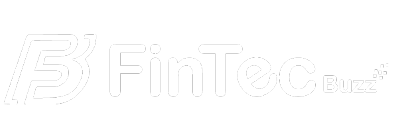In today’s fast-paced business environment, digital transformation is essential for financial institutions to stay ahead of the curve. Consumers have a digital-centric mindset and it’s crucial for institutions to re-evaluate how they provide services, ensuring they cater to this mentality. To create an omnichannel modern banking environment, institutions need to examine where opportunities exist to elevate interactions and meet or exceed consumer expectations. The foundation of this transformation is the adoption of eSignatures, which streamlines the signing process and eliminates the need for physical documents.
Nearly all banking activities, from wire transfers to credit card transaction disputes, require some form of signature. eSignatures can and should be leveraged throughout the entire institution to streamline operations, close the consumer experience gap and discover untapped ROI. However, it’s not enough to simply choose any eSignature solution – it’s imperative to select one that is an integrated one that will seamlessly integrate with your current systems. APIs enable software to connect and perform a series of tasks, including digitizing services and incorporating eSignatures.
APIs Integral to Transformation
Application programming interfaces (APIs) have significantly changed the way financial institutions operate technologically and will continue to influence the evolution of the financial services industry. APIs enable the integration of an increasing array of internal and external banking systems, applications, data, strategies, and activities. As the foundation of an institution’s digital transformation strategy, it is especially important that an eSignature solution seamlessly interfaces with the core processing platform, as well as the other existing business applications.
While most institutions are taking advantage of eSignatures in some capacity, there is still a large usage gap. For example, it is very common to leverage eSignatures for lending or account opening, while other transactions, such as wire transfers, credit card disputes, and other account maintenance tasks, rely on manual, paper-based procedures. Adopting an eSignature platform that can easily integrate with an institution’s existing technology infrastructure is critical to enabling end-to-end digital transactions in a paperless environment, as well as delivering an enhanced, more engaging experience to customers in both a remote environment, as well as in-person at the branch.
Streamlined Operations, Increased Accuracy
In today’s market, financial institutions are facing increasing pressure to work faster and smarter. Incorporating eSignatures allows employees to initiate digital transactions directly from their business systems, reducing the manual effort required to upload documents for eSignature processing. Automating these processes not only saves time but also enables employees to focus on the customer, providing a more engaging and robust experience.
Manual tagging and dragging of signature fields are common with many eSignature solutions, which can be time-consuming and error-prone. Integrating eSignatures eliminates this need entirely, automatically placing the required signature fields in all applicable areas without employee interaction. Selecting an eSignature platform with a seamless, streamlined interface enables employees to complete transactions faster in a completely digital environment. Automated archiving and filing into the content management system improve the overall accuracy of each transaction, eliminating the possibility of accidental human error. This ensures that critical business documents and lending collateral are not legally compromised by errors or omissions, reducing the risk, protecting the validity of signed documents, maintaining compliance, and ultimately saving time.
Conclusion
Integrated eSignatures provide an end-to-end solution, allowing completed and eSigned documents, along with relevant audit files, to be fully indexed, categorized, and stored within ECM/Imaging systems for permanent record keeping and future retrieval requirements. This eliminates the need for manual scanning, indexing, or human intervention to store and protect your critical business records.
As financial institutions accelerate their digital-first strategy, having an eSignature platform that effectively integrates with current systems is critical. Additionally, employees are able to complete more transactions faster, while providing customers a frictionless experience. Implementing an eSignature platform that can be easily integrated across all applications is key to ensuring transactions are processed seamlessly and error-free within an institution’s business environment.

Michael Ball, Senior Vice President, Kinective
Michael Ball is IMM’s Senior VP, Markets and Strategy, with over 30 years of technology leadership experience in the banking and financial services software industry. He drives revenue and strategic initiatives, including sales, partnerships, and marketing. With a focus on accelerating growth, Ball develops strong strategies, enhances customer experiences, and positions IMM as the leading eSignature company. He is a respected thought leader, frequently speaking at industry events and contributing to trade publications.



